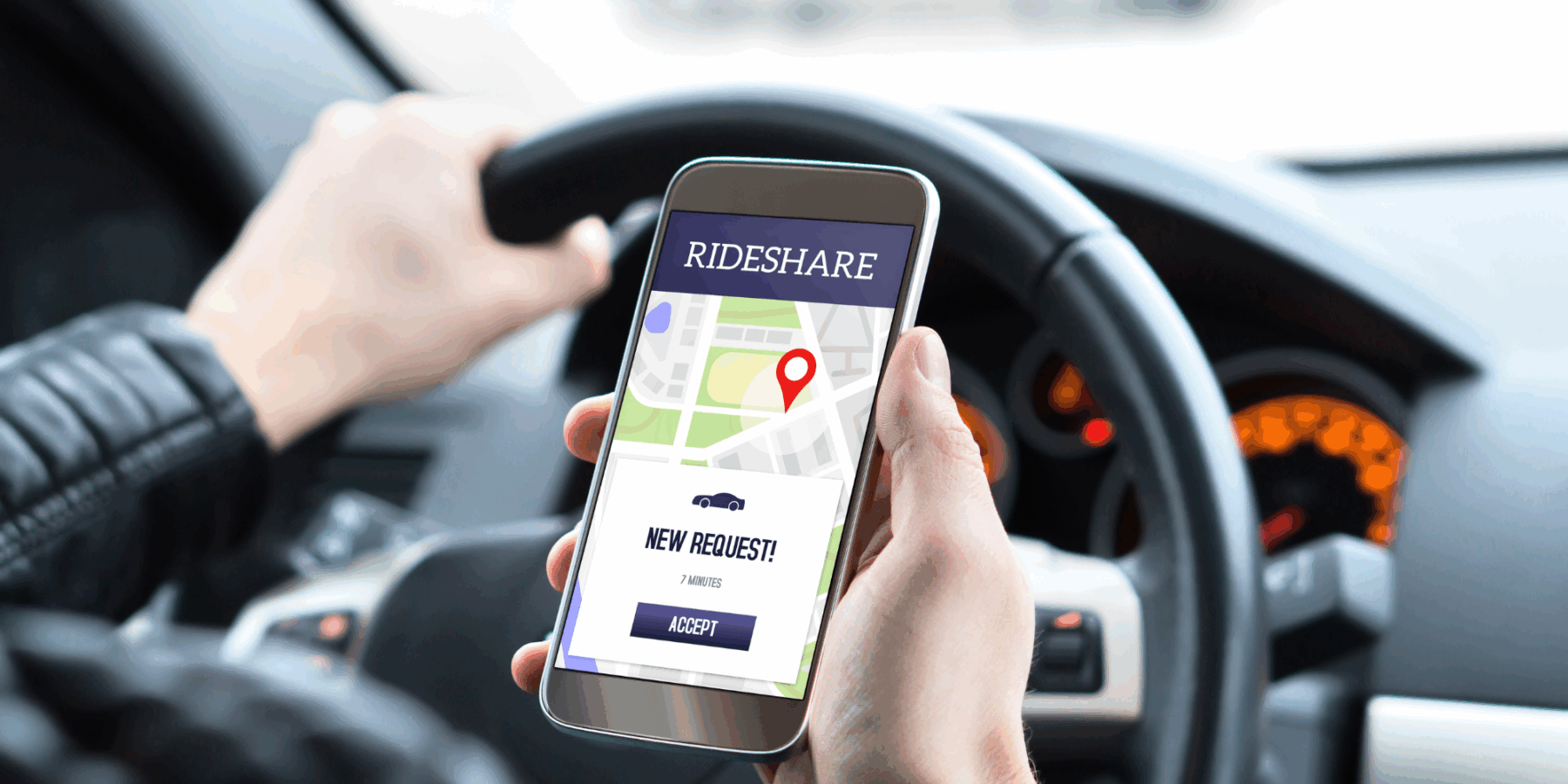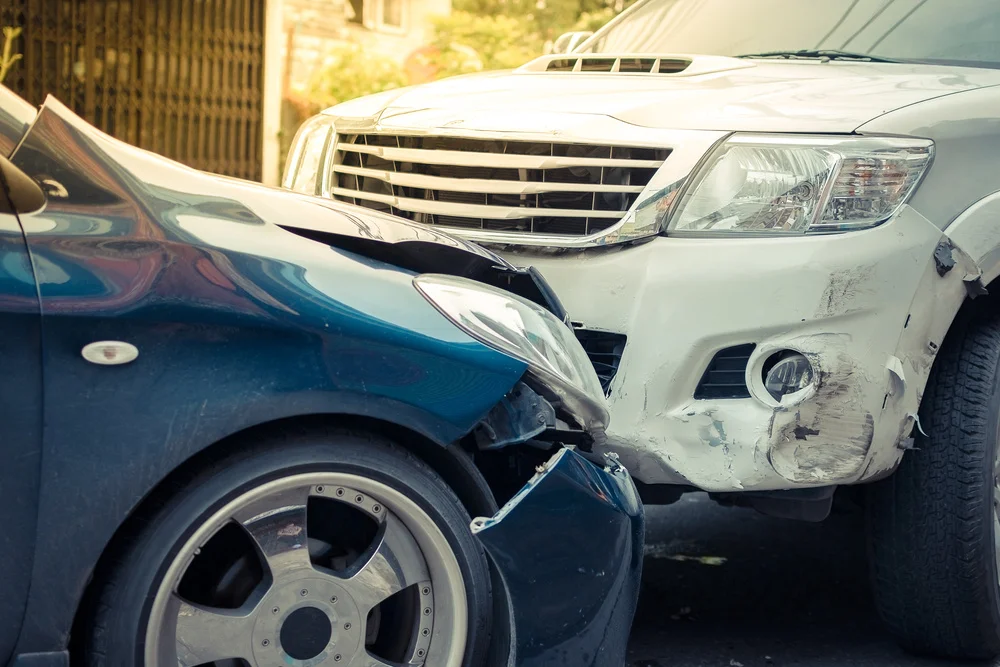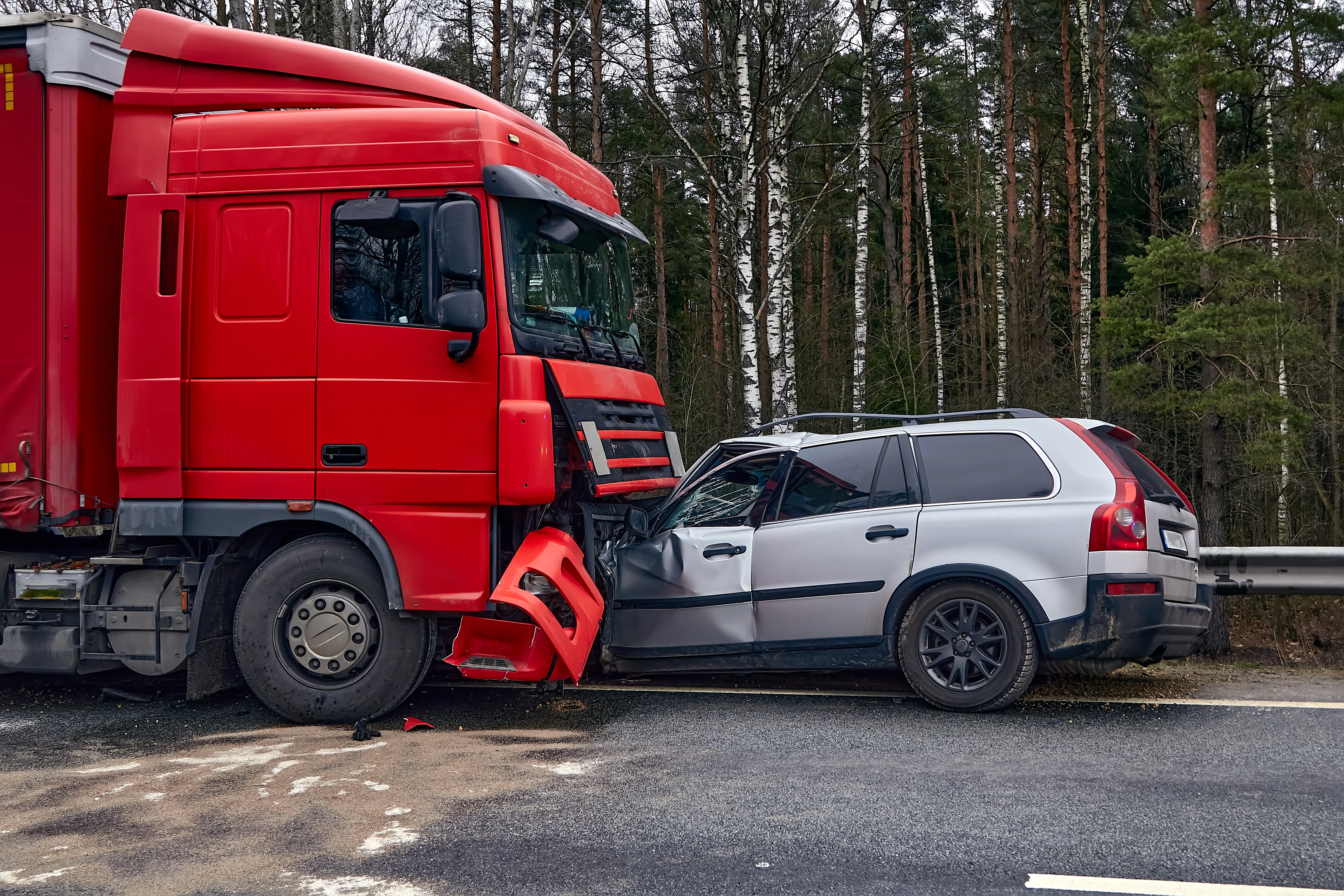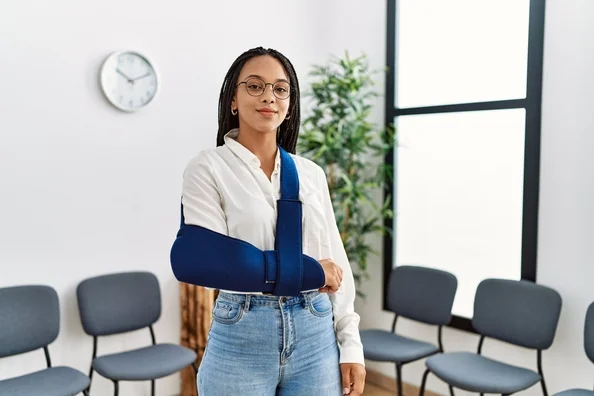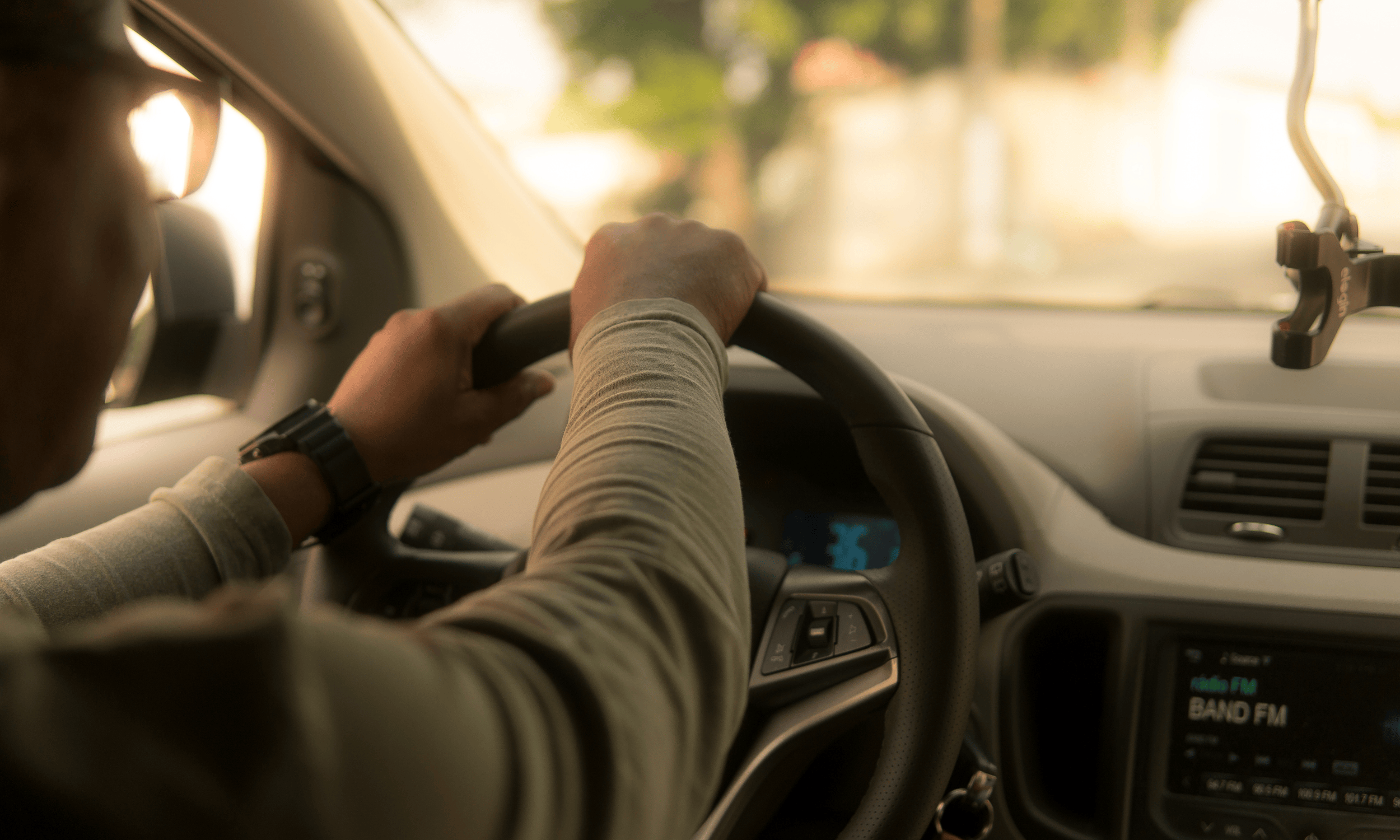Lancaster Rideshare Accident Attorneys Representing Uber and Lyft Injury Victims
Rideshare services like Uber and Lyft have become everyday transportation tools in Lancaster—but with their growing presence comes an increase in serious traffic collisions involving both passengers and pedestrians. Whether you were injured as a rider in an Uber near Sierra Highway, struck by a Lyft vehicle while walking near the Lancaster Metrolink Station, or rear-ended by a distracted rideshare driver on Avenue J, your accident deserves immediate legal attention. At The Larry H. Parker Law Firm, we represent injury victims in Lancaster rideshare crashes and help them pursue the compensation they need to recover.
These accidents aren’t simple fender-benders. Rideshare crashes involve multiple insurance policies, corporate procedures, and questions about the driver’s “status” within the app at the time of the crash. Drivers may be en route to pick up a passenger, logged into the app but waiting for a fare, or transporting someone when a crash occurs. Each of these scenarios affects how liability is determined and what coverage is available. At The Larry H. Parker Law Firm, our team acts fast to gather evidence, access trip data, retrieve app logs, and hold both the driver and the rideshare company accountable.
California regulators, including the California Public Utilities Commission, require rideshare platforms to follow strict operational and safety standards—including commercial insurance coverage and background checks for drivers. But as Lancaster traffic increases and more drivers sign on to these platforms with little training or area familiarity, the risks grow. You can learn more about the regulation of rideshare companies by visiting the CPUC Transportation Network Company (TNC) webpage. Our job is to make sure when those standards are violated and you get hurt, the responsible parties are forced to pay.
Why You Should Hire Larry H. Parker Law Firm for Your Lancaster Rideshare Accident Case
Rideshare injury claims involve far more complexity than traditional car accident cases. Multiple insurance carriers, overlapping policies, and unclear driver statuses can make it difficult to know who is responsible for paying your damages. At The Larry H. Parker Law Firm, we understand how to navigate the insurance maze created by Uber, Lyft, and other rideshare platforms. We’ve handled claims involving passengers, drivers, pedestrians, cyclists, and other motorists who were injured in collisions involving app-based transportation in Southern California.
Our Lancaster rideshare accident attorneys move quickly to preserve digital trip data, retrieve driver app logs, and establish which insurance policy applies. We understand how to interpret transportation network company (TNC) records and use them to strengthen your case. Whether you were hurt on a weekend night along Avenue I or sideswiped by an inattentive Uber driver outside a business plaza near 10th Street West, we bring more than four decades of experience to your case—and we never let the rideshare giants shift blame or delay your claim.
Why Lancaster rideshare accident victims trust The Larry H. Parker Law Firm:
- We analyze driver app activity to prove rideshare status and trigger higher commercial insurance coverage
- Our legal team preserves trip receipts, GPS records, and app screenshots before they can be deleted or altered
- We pursue claims against all liable parties—including the driver, Uber or Lyft, and third-party motorists if applicable
- We never charge upfront fees, and we only get paid when we win your case
Where Rideshare Accidents Commonly Happen in Lancaster
As Lancaster continues to grow, so does its reliance on rideshare services. But with that growth comes increased risk—especially in areas with heavy foot traffic, high-speed roads, or poor infrastructure. Uber and Lyft drivers often rely on navigation apps they don’t fully understand and make fast decisions while rushing between pickups and drop-offs. This leads to an alarming number of crashes near intersections, parking lots, shopping centers, and transit hubs throughout Lancaster. At The Larry H. Parker Law Firm, we’ve studied the traffic trends and case patterns in this region, giving us a clear understanding of where and why rideshare collisions are happening.
Many Uber and Lyft crashes occur because drivers are distracted by their phones, rushing to meet ride quotas, or unfamiliar with local traffic flow. Others happen when rideshare passengers are dropped off or picked up in unsafe locations—like double-parked on busy roads or in unmarked loading zones. These situations often place both the passenger and nearby drivers or pedestrians in harm’s way. Our attorneys investigate every detail to determine how the location, traffic pattern, and road conditions played a role in the crash.
Lancaster Transit Zones, Shopping Corridors, and Entertainment Centers
Rideshare collisions are especially common in commercial zones where pickup and drop-off activity is high. The area surrounding the Lancaster Metrolink Station, for example, sees constant traffic from commuters using Uber or Lyft to connect with rail service. Similarly, shopping centers near Avenue K, the Lancaster Marketplace, and medical facilities off 10th Street West often become chaotic zones of stop-and-go movement. Rideshare drivers may double park, block lanes, or make illegal U-turns when under pressure to arrive quickly—leading to crashes involving pedestrians, cyclists, and other vehicles.
Entertainment venues like the Lancaster Performing Arts Center, seasonal festivals downtown, and local nightlife locations also see heavy rideshare activity. These environments combine dim lighting, pedestrian congestion, and aggressive vehicle maneuvering, especially on weekend evenings. Our attorneys understand how traffic volume, event density, and inadequate curbside infrastructure contribute to preventable rideshare-related collisions—and we use this knowledge to strengthen liability claims.
Residential Neighborhoods, School Zones, and Unmarked Streets
Not all rideshare accidents happen in commercial corridors. Many occur in residential areas where drivers unfamiliar with the neighborhood rely entirely on GPS. In neighborhoods like Quartz Hill and the eastern subdivisions near Avenue L, narrow roads, unmarked intersections, and limited street lighting make crashes more likely. Drivers often make last-minute turns, stop in unsafe spots, or ignore posted signs—creating danger for both passengers and residents.
School zones also present risks. We’ve handled cases where Uber or Lyft drivers dropped off students near Lancaster High School or Eastside High without using designated zones. When rideshare drivers stop unexpectedly near schools or fail to account for crossing guards and pedestrian traffic, serious collisions can occur. Our team uses area maps, school zone regulations, and surveillance footage to identify violations and prove fault.
Common Causes of Rideshare Accidents in Lancaster
Rideshare crashes in Lancaster often happen because of preventable mistakes. Whether it’s an Uber driver racing to pick up a passenger or a Lyft vehicle stopping suddenly in traffic, these accidents usually involve distraction, poor judgment, or road rule violations. Lancaster’s expanding road network—especially near residential growth zones, busy shopping plazas, and the Metrolink corridor—creates frequent opportunities for driver error. Rideshare drivers are often unfamiliar with the area, overly reliant on GPS, or under pressure to complete as many trips as possible in a short window. The result: dangerous conditions for passengers, pedestrians, and other motorists.
At The Larry H. Parker Law Firm, we investigate every crash to identify exactly what went wrong. We analyze app records, phone logs, traffic camera footage, and black box data to establish the cause and strengthen your injury claim. Below are the most frequent causes of rideshare collisions we see in Lancaster:
Distracted Driving While Using the App
Uber and Lyft drivers rely heavily on their phones to accept rides, follow navigation, and communicate with passengers. This split attention often results in missed stop signs, late braking, and failure to yield. Lancaster’s mix of fast-moving roads and unpredictable intersections—such as Avenue I and Sierra Highway—creates a perfect storm for distraction-related crashes. We review phone activity and app usage to demonstrate how driver inattention directly caused the accident.
Unsafe Pickups and Drop-Offs
Many rideshare drivers stop in unsafe locations when picking up or dropping off passengers. This includes double-parking on busy streets, pulling into red zones, or stopping mid-block where traffic continues to flow. In Lancaster, we see these incidents frequently near retail plazas, schools, and narrow streets without marked loading zones. Passengers exiting vehicles are sometimes struck by passing cars, or vehicles behind crash while trying to avoid the stopped rideshare. We document vehicle positions and app timestamps to prove negligent stop behavior.
Speeding or Reckless Driving to Maximize Ride Count
Rideshare drivers are often paid based on volume—not time—so many feel pressure to drive aggressively to complete more trips per shift. This includes speeding down open stretches of Challenger Way or running lights at intersections like Avenue K and 10th Street West. High-speed collisions frequently result in more severe injuries and greater property damage. We use dash cam footage, crash reconstruction, and witness statements to show that reckless driving led to the collision.
Unfamiliarity with Local Roads
Unlike taxis, many rideshare drivers are not trained professionals and are unfamiliar with Lancaster’s roads. They rely entirely on GPS and sometimes make sudden turns, wrong-way entries, or last-minute lane changes. This is especially dangerous in the city’s growing east side, where new development and construction constantly change traffic flow. We examine GPS paths and route data to identify dangerous maneuvers and demonstrate how lack of familiarity with the area increased risk.
Common Types of Car Accidents Involving Rideshare Vehicles in Lancaster
Rideshare vehicles are involved in all kinds of accidents throughout Lancaster. Some happen at high speeds on major roads. Others occur in parking lots or while turning at crowded intersections. Because Uber and Lyft drivers are constantly picking up and dropping off passengers, their behavior often changes quickly and unpredictably. These shifts in attention and movement lead to a wide range of crash types—each with unique legal and medical consequences. At The Larry H. Parker Law Firm, we investigate how the collision happened and identify the driver’s role, the vehicle’s movement, and the timeline of events to prove who is at fault.
Below are the most common accident types we see involving rideshare vehicles in Lancaster:
T-Bone Collisions at Intersections
T-bone crashes often occur when a rideshare driver runs a red light or fails to yield during a left turn. These crashes are especially common at intersections near commercial centers, schools, and busy multi-lane roads like Avenue K and 10th Street West. The side impact can crush door frames and cause serious injuries to both passengers and drivers. We use traffic signal data, intersection surveillance, and app trip records to show the driver’s error and build your case.
Head-On Collisions on Narrow or Unfamiliar Roads
Uber and Lyft drivers unfamiliar with Lancaster’s roads may make sudden wrong turns or drift across lanes. This can lead to head-on collisions on two-lane roads or in residential areas with poor lighting. These crashes often cause catastrophic injuries, including brain trauma and broken bones. We analyze GPS routes and accident reconstruction data to prove that the rideshare driver was traveling the wrong way or failed to stay in their lane.
Rear-End Crashes Due to Sudden Stops
Rear-end collisions happen when rideshare drivers stop abruptly to pick up or drop off passengers without checking traffic behind them. They also occur when drivers follow too closely or are distracted by the app. Lancaster’s busy corridors, like Challenger Way and Avenue I, are frequent sites of these crashes. Whether you were in the rideshare vehicle or hit by one from behind, we use dash cams and braking data to determine who caused the impact.
Other High-Risk Rideshare Accident Types
We also handle lane change collisions, sideswipe accidents, multi-vehicle chain reactions, and crashes involving pedestrians or cyclists. These often occur when rideshare drivers make quick lane changes to meet pickup times, swerve around stopped traffic, or pull into unmarked loading areas. We evaluate every movement using GPS logs, trip summaries, and vehicle data to prove the cause and strengthen your legal position.
Injuries Frequently Sustained in Lancaster Rideshare Accidents
Collisions involving Uber and Lyft often result in serious physical harm. Whether you’re a rideshare passenger, another driver, or a pedestrian, your body is exposed to sudden forces that cause significant trauma. These injuries can range from surface-level damage to life-threatening internal complications. Rideshare passengers are especially vulnerable because many do not wear seatbelts or are seated in rear positions with less protection. At The Larry H. Parker Law Firm, we work with trauma surgeons, neurologists, and rehabilitation experts to assess every injury and fight for full compensation.
Below are the most frequent injuries we see in Lancaster rideshare accident cases:
Traumatic Brain Injuries (TBI)
A blow to the head during a collision can lead to a traumatic brain injury. Even if there is no visible wound, internal swelling or bleeding can affect memory, concentration, and behavior. Victims may experience confusion, mood swings, dizziness, or long-term cognitive damage. We use brain scans and neurological evaluations to support your claim and make sure the insurance company cannot dismiss the seriousness of your condition.
Broken Bones and Fractures
Fractures are common in rideshare crashes, especially in the arms, ribs, legs, or collarbone. Passengers often break bones while bracing for impact or when thrown inside the vehicle. Some fractures require surgery, physical therapy, or orthopedic implants. We include X-rays, surgical notes, and recovery timelines in your case file to ensure your long-term needs are fully documented.
Internal Organ Damage
High-speed rideshare accidents can result in internal injuries such as punctured lungs, ruptured spleens, or damage to the liver and kidneys. These injuries may not be obvious at first but can be fatal without immediate medical treatment. Internal bleeding or swelling may require emergency surgery or ICU care. We work with trauma specialists to prove the extent of these injuries and seek compensation for all follow-up procedures and long-term complications.
Soft Tissue Injuries
Whiplash, muscle tears, and ligament sprains are common in rear-end and side-impact crashes. These soft tissue injuries may not appear on initial scans but can cause ongoing pain, reduced mobility, and loss of strength. Rideshare passengers often experience shoulder, back, or neck strain from sudden vehicle movement. We use physical therapy records, chiropractic evaluations, and pain management documentation to establish their severity.
Spinal Injuries and Nerve Impingement
Spinal damage can include herniated discs, compressed vertebrae, or spinal cord trauma. These injuries may result in nerve pain, partial paralysis, or permanent disability. In Lancaster rideshare collisions, spinal trauma is often linked to high-speed impacts or rollovers. We collect MRI reports, specialist notes, and functional assessments to build a complete picture of your recovery needs.
How Larry H. Parker Law Firm Determines Liability in Lancaster Rideshare Accidents
Establishing liability is the foundation of every successful rideshare injury case. Without proof of fault, insurance companies will reduce or deny your claim. In Lancaster rideshare accidents, multiple parties may share responsibility—including the Uber or Lyft driver, the company, another motorist, or a public entity that failed to maintain safe road conditions. At The Larry H. Parker Law Firm, we move fast to build a solid case that clearly shows who caused the crash and why they should be held financially accountable.
Our attorneys rely on digital evidence, eyewitness testimony, physical damage analysis, and California traffic law to assign fault. Below are the five key steps we take to determine liability in rideshare injury cases:
Reviewing Camera Footage and Trip Data
We obtain surveillance footage from nearby businesses, public intersections, or onboard dash cams. This footage often shows whether the rideshare driver ran a red light, made an unsafe turn, or failed to yield. In addition, we analyze GPS trip data and app-based location logs to verify the timing, route, and speed of the rideshare vehicle. These records provide clear proof of movement before, during, and after the crash.
Taking Witness Statements
Independent witnesses help confirm what really happened. We locate and interview bystanders, other drivers, or rideshare passengers who saw the crash. Their statements can confirm if the driver was speeding, distracted, or made an illegal maneuver. We gather these accounts quickly, before memories fade, and use them to support your version of events.
Examining Driver App Status and Ride History
A driver’s app status determines which insurance policy applies. We request app records to find out whether the driver was logged in, en route to a pickup, or transporting a passenger. This information is crucial because it affects whether the company’s commercial policy or the driver’s personal insurance must cover the damages. We also review the driver’s ride history for signs of overwork, back-to-back rides, or unsafe route patterns.
Inspecting Vehicle Damage and Crash Impact Points
We examine damage to the rideshare vehicle and any other cars involved in the collision. The pattern and location of the damage often reveal who struck whom and at what angle. We use photos, repair estimates, and accident reconstruction to demonstrate the sequence of events. Our attorneys work with mechanical experts and engineers to make sure the physical evidence matches your story.
Applying California Vehicle Code and Local Traffic Laws
Our legal team applies California traffic laws and Lancaster municipal codes to show how the at-fault driver violated safety regulations. This includes failure to yield, illegal lane changes, distracted driving, or improper stops. We cite these laws directly in our demand letters and legal filings to make the liability clear to the insurance carrier and, if needed, to a jury.
Compensation Available to Lancaster Rideshare Accident Victims
Rideshare accidents can leave victims with more than just physical pain. You may lose your income, face mounting medical bills, and experience permanent injuries that change your daily life. At The Larry H. Parker Law Firm, we fight for rideshare crash victims in Lancaster to recover every dollar they are owed. We evaluate your injuries, investigate all liable parties, and build a claim that reflects your real losses. Our attorneys move quickly to gather documentation and hold drivers, insurance companies, and rideshare platforms accountable.
Whether you were riding as a passenger in an Uber or Lyft or hit by a rideshare driver while crossing the street, you may qualify for several categories of compensation. Each case is different, but we work to identify every loss and fight to maximize your settlement. Below are the key types of compensation we pursue in Lancaster rideshare injury claims:
Emergency Medical Costs and Ongoing Health Care Expenses
We recover full reimbursement for your emergency treatment, imaging scans, surgical procedures, and hospitalization. We also include follow-up care, such as physical therapy, chiropractic sessions, and long-term specialist appointments. If you require mobility devices or in-home care, we document those costs using expert evaluations and treatment plans.
Lost Income and Reduced Earning Capacity
Rideshare crash injuries often force victims to miss work. Some cannot return to the same job or must reduce their hours. We recover your lost wages using employer records and calculate future losses with the help of economists. If your injury has reduced your ability to earn income long-term, we include that in your claim.
Pain, Suffering, and Mental Health Losses
You may be entitled to compensation for pain, anxiety, trauma, and emotional distress. Many Lancaster rideshare victims suffer from post-traumatic stress, sleep problems, or depression after the crash. We work with mental health experts to show how the injury affects your daily life. These non-economic damages are often the largest part of a settlement.
Property Damage and Out-of-Pocket Costs
If your phone, glasses, clothing, or other items were damaged in the accident, we include the replacement value. You can also claim transportation expenses, medical equipment costs, and other out-of-pocket losses related to your injury. We document every receipt and work to recover every cost tied to your recovery.
Permanent Disability or Disfigurement
When rideshare injuries result in scarring, amputations, or long-term disability, we pursue full compensation for future care. That includes prosthetics, home modifications, vocational retraining, and ongoing therapy. These damages require expert documentation and long-term medical projections, which we prepare in every serious injury case. To understand more about the public safety standards rideshare companies are expected to meet in California, you can review guidance published by the National Highway Traffic Safety Administration (NHTSA).
Contact a Lancaster Rideshare Accident Attorney Today
If you were injured in a rideshare accident involving an Uber or Lyft driver in Lancaster, do not wait to protect your rights. These cases are complex, and the insurance companies are already working to minimize what they owe. You need a legal team that knows how to navigate the rideshare system, access trip records, and fight back against lowball settlement offers.
At Larry H. Parker, we have recovered more than $2.2 billion for injury victims throughout California. Our attorneys know how to investigate rideshare crashes, prove liability, and maximize compensation. Whether you were a passenger, pedestrian, cyclist, or another driver, we are ready to fight for you.
📞 Call Larry H. Parker now at (800) 333-0000 for a free consultation.
🌐 Visit www.larryhparker.com to learn more about how we help Lancaster rideshare accident victims win the justice they deserve.
Practice Areas
Trust UsWith Your Personal Injury Claim
If you or a loved one have been injured, the Law Offices of Larry H. Parker will fight for you every step of the way. We will give our all to secure the compensation you rightfully deserve.
Contact usfor a free consultation.
Phone: (310) 736-6869
